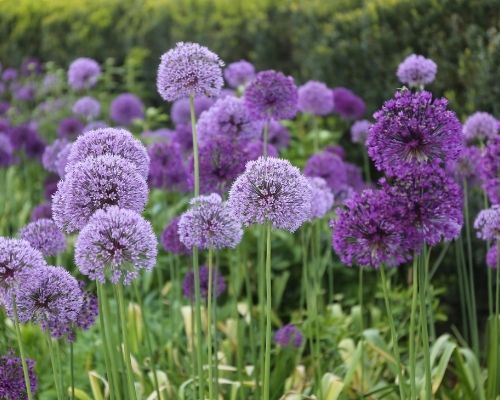Inspiring Ways to Use Alliums in a Perennial Garden
Planting alliums is an easy way to add color and excitement to your flower garden. To help inspire you, we have developed an exclusive garden design in collaboration with Nick McCullough, an award-winning APLD-certified garden designer. Nick owns McCullough's Landscape and Nursery in Columbus, OH. He is also the author of the popular garden blog: Thinking Outside the Boxwood and his Pinterest account has an impressive 3.3MM followers!
Nick's “Bountiful Blooms” garden design has the look and feel of a traditional English flower border. The color combination of pink, purple, blue and chartreuse is a look that’s both fresh and soothing to the eye. (You can see the full design at the bottom of this page.)
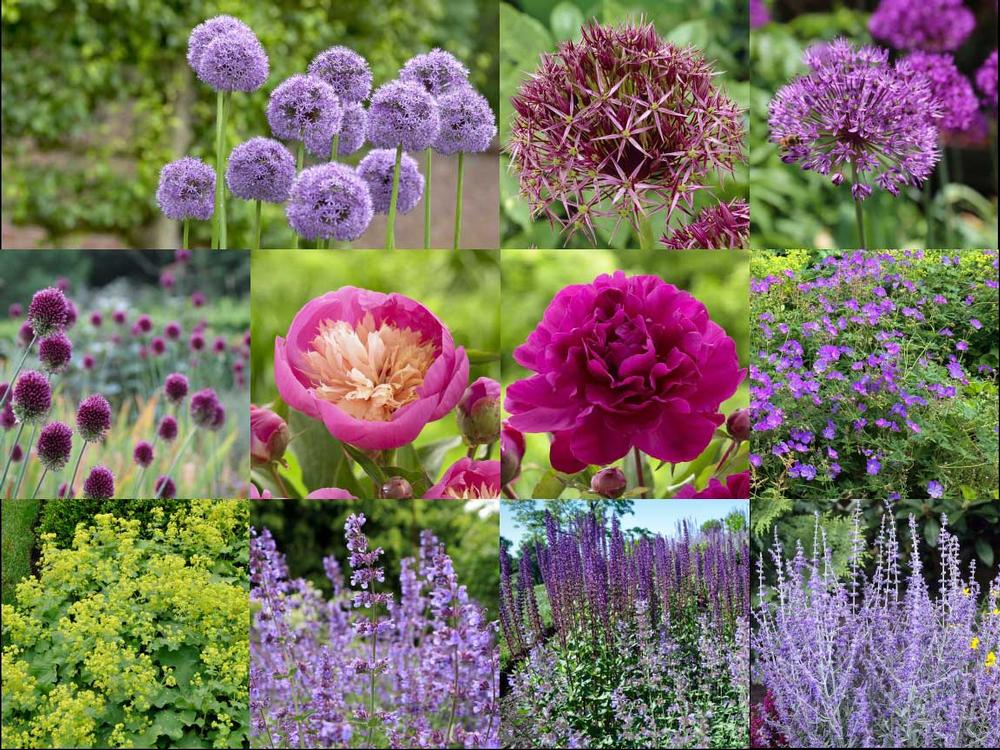
The garden was designed for a sunny, 10’ x 18’ area, but you can easily modify it to suit almost any space. The flowering season begins with Purple Sensation alliums. These 3-4” diameter blossoms are purple when they first open, and gradually change to violet-pink. Purple Sensation bulbs are relatively inexpensive, so feel free to add more bulbs than the number specified to get an even more impressive show.
The second allium to bloom is ‘Gladiator’. It has large, 6” diameter flower heads on sturdy, 3' stems. Like all alliums, Gladiator is a magnet for pollinators, including the season’s first butterflies. The flowers retain their color for 3 weeks or more and then gradually fade. You can leave the flower heads in place or cut the stems near the base and dry them to display indoors in a vase.
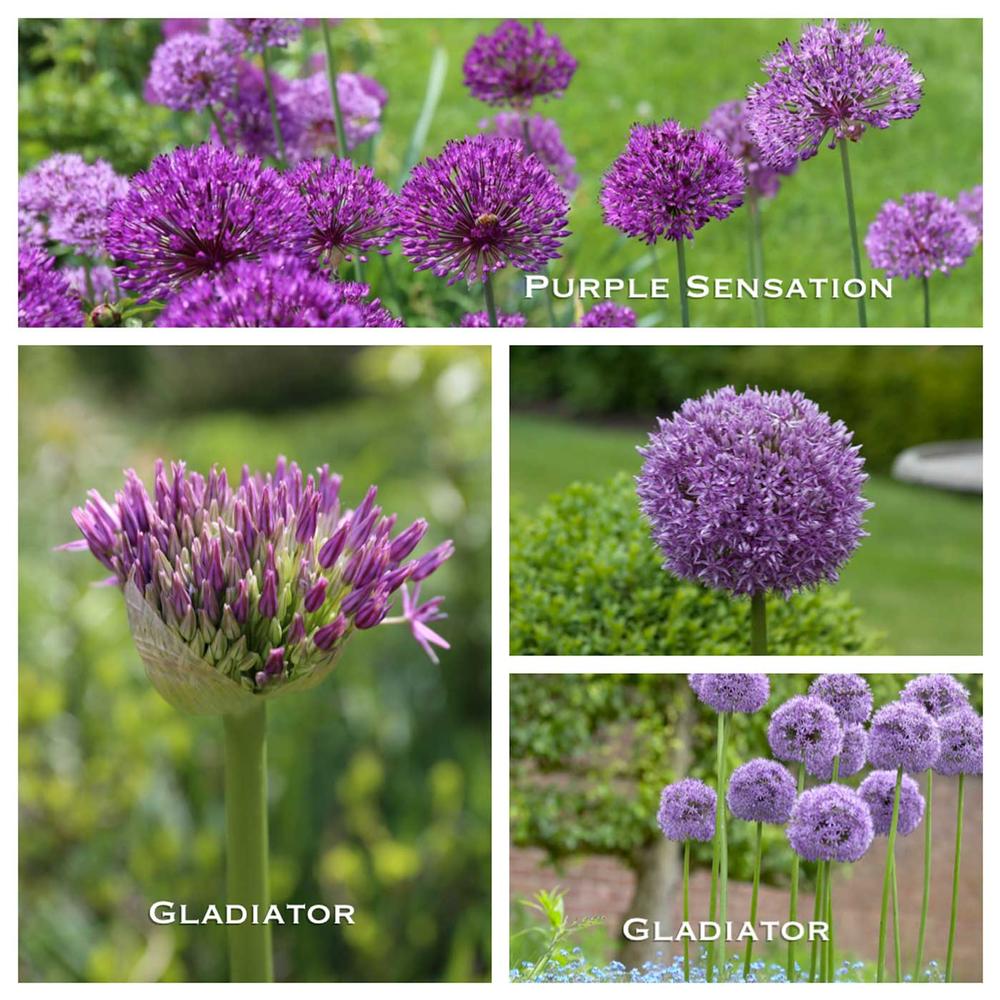
Gladiator will still be blooming when the buds of peonies ‘Bowl of Beauty’ and ‘Bunker Hill’ start opening. Planting peonies is an investment. It may be 3 years before you get a good show of flowers, but once these plants start blooming, they can produce 50 or more flowers per plant and will bloom for generations.
Lady’s mantle (Alchemilla mollis) and geranium ‘Rozanne’ are low, spreading perennials that will weave themselves together in the front of the bed and give 4 to 6 weeks of color. (To stretch this garden’s bloom time into early spring, consider planting some crocus and miniature daffodils in with the geraniums.)
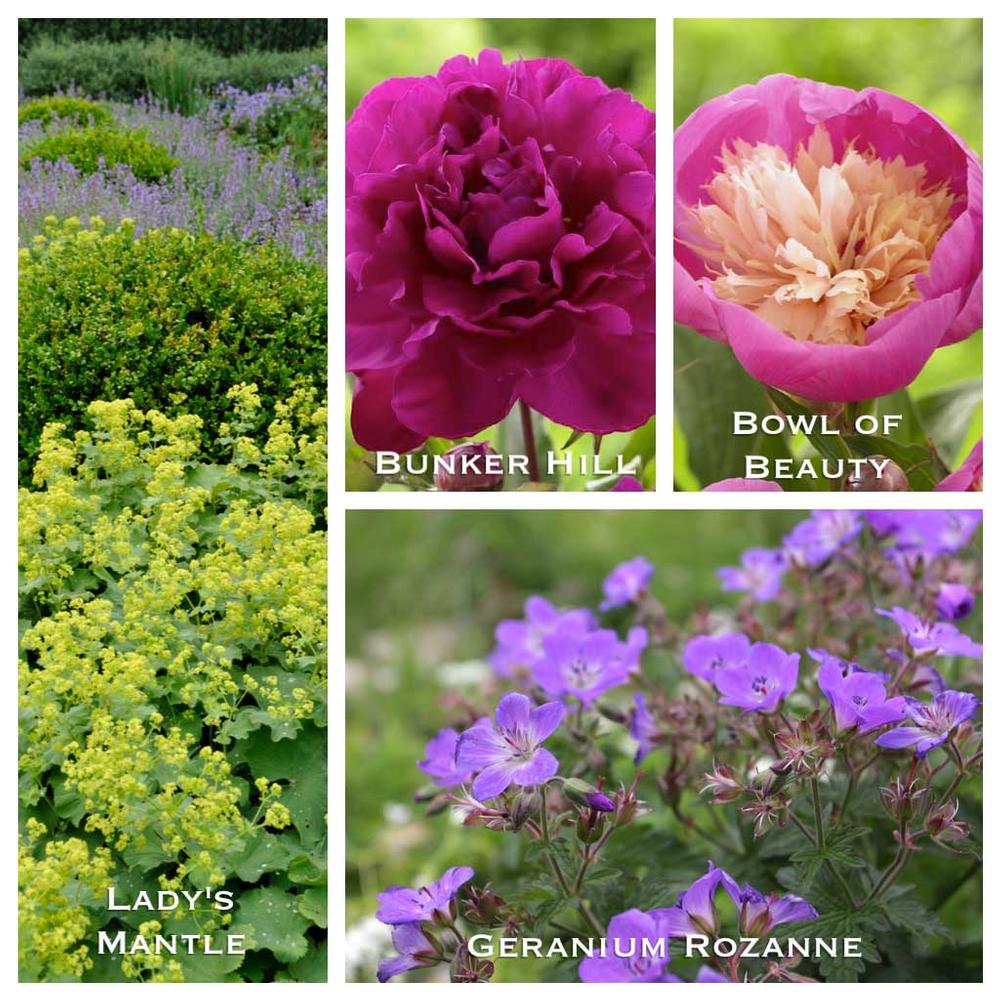
From this carpet of lavender and chartreuse blossoms will emerge two additional alliums: Star of Persia (A. christophii) and Drumstick (A. sphaerocephalon). Not as well known as other types, these flowers each have their own special look, and they stretch the allium season into early summer.
Midsummer brings another burst of purple from the spires of catmint (Nepeta faassenii 'Kit Kat’) and ‘Caradonna’ sage (Salvia nemorosa). Both of these perennials have fragrant foliage and will re-bloom in late summer if you shear off the spent flowers.
Closing out the season is Perovskia ‘Little Spire’. This Russian sage is about a foot shorter than the standard type, and it has the same pretty grey-blue foliage and lavender flowers. Bloom time is August into September.
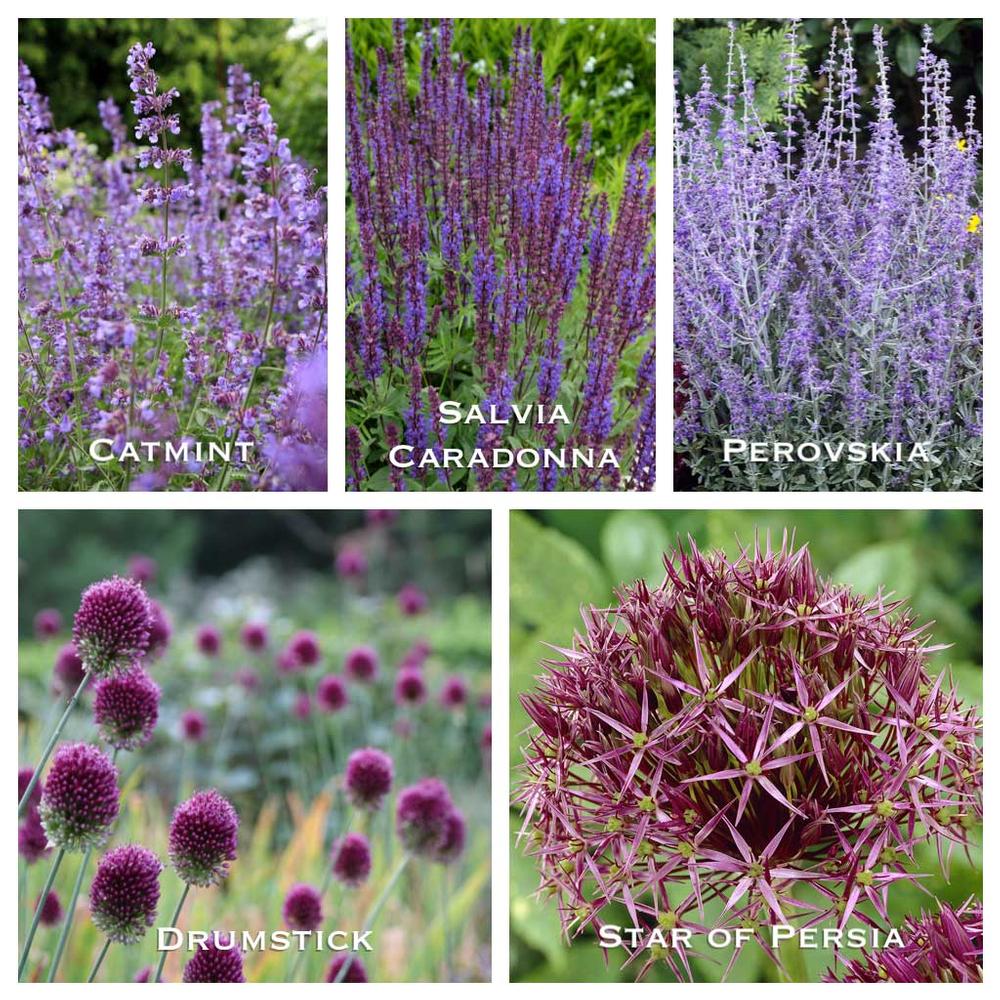
Related blog posts:
Nick McCullough wrote in Thinking Outside the Boxwood about creating this garden design.
Angela Lituri wrote about alliums at The Freckled Rose.
Debra Prinzing of Slow Flowers wrote about alliums at debraprinzing.com
Jason Kay wrote about allums at Garden In a City.
Robin Horton wrote about alliums at Urban Gardens.


